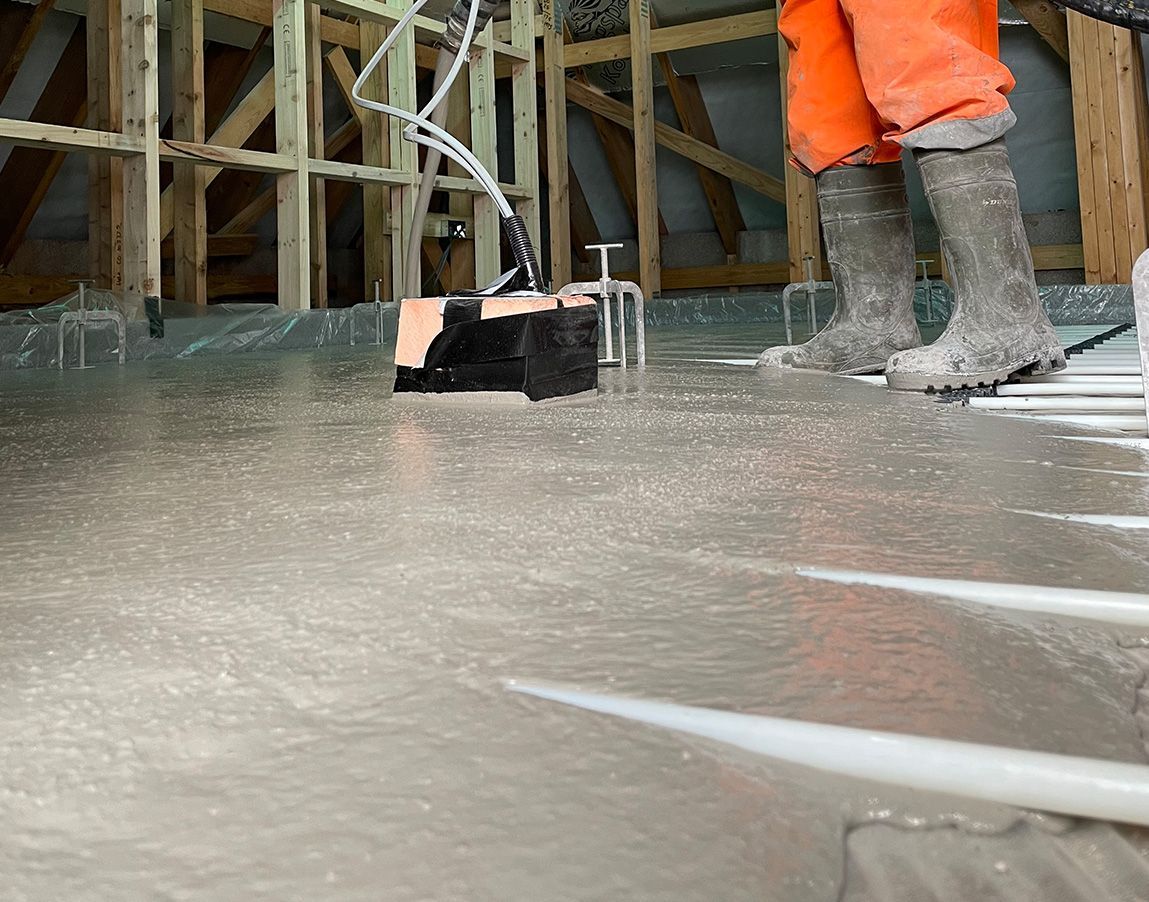Floor screed for underfloor heating
Clockwork Screed supplies and installs floor screed for underfloor heating.
Here, we explain how floor screed enhances the performance of underfloor heating systems.
Types of screed suitable for underfloor heating

Optimal screed thickness over underfloor heating pipes
Screed thickness will impact the effectiveness of the underfloor heating system. The optimal thickness of screed for underfloor heating pipes is 65-75mm for traditional sand and cement screeds, whereas for liquid screed it is lower at 50-55mm.
The fast drying cementitious liquid screed from Clockwork Screed can be laid as thinly as 25mm to maximise the underfloor heating performance without compromising the strength or durability of the screed.
Drying times for screed with underfloor heating
Traditional screed with underfloor heating dries at a rate of approximately 1mm a day up to 40mm thickness and 0.5mm a day thereafter, taking up to 12 weeks to dry properly.
Cementitious liquid screeds are designed for faster drying with a strong finish. Cemfloor liquid screed, supplied by Clockwork Screed, can withstand light foot traffic within 24-48 hours, allowing workers back onto site quickly. Under optimal conditions, final floor coverings can be applied approximately 28 days after installation.
Thermal efficiency: how screed improves underfloor heating performance
Cemfloor liquid screed from Clockwork Screed offers exceptional thermal efficiency to improve underfloor heating performance. The liquid screed flows and self-compacts around the pipes without gaps to maximise heat conduction.
The reduced thickness of the liquid screed helps to transfer the heat efficiently from the underfloor heating system to the floor surface. The depth saved by the thin application of screed can also be used to uprate underfloor insulation.
Offering exceptional thermal conductivity, Cemfloor delivers a faster response time than traditional screeds; the required operating temperature is reached in around a quarter of the time or less from the point of the system being switched on.

Common problems with screed and underfloor heating (and how to avoid them)
Cracked screed
Cracking and debonding of the floor covering can occur if the underfloor heating isn’t sufficiently commissioned which involves testing and fine-tuning the system to ensure it is working efficiently. Solution: Follow the screed manufacturer installation guidelines carefully. Heat the underfloor heating system gradually to allow the screed to adjust.
Screed drying time
Waiting for screed to dry will delay your project.
Solution: Use a screed that will dry within your project timescales. Follow manufacturer instructions regarding ventilation and other environmental conditions to help speed up the drying process.
Inconsistent screed thickness
Uneven screed thicknesses across a floor will reduce the efficiency of your underfloor heating system.
Solution: Prepare the subfloor sufficiently and use a liquid floor screed that self-levels.
Moisture levels
Mould can grow if there is too much moisture in the screed. This impacts the efficiency of the underfloor heating system.
Solution: Carry out comprehensive moisture testing before applying the final floor covering. Floor finishes can be applied to Cemfloor liquid screed when moisture levels are at 2.5%CM. Anhydrite screeds need to be at 0.5%CM, which takes much longer to achieve.

Clockwork Screed - a reliable floor screed supplier for underfloor heating installations
Get in touch with Clockwork Screed to discuss your underfloor heating project.







